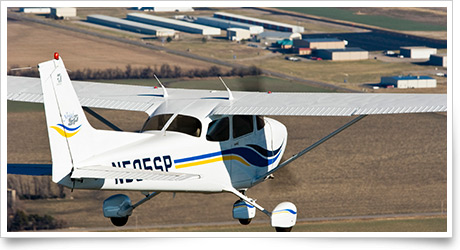training tipsAn elegant arrival
An airport doesn’t have to be blue on a sectional chart--that is, have a control tower--to have operational limitations to check on before your flight. Some of those need-to-know items may be determined by your time of arrival. Others, such as this airport’s prohibition on touch-and-go practice, are in effect at all times. (With a short runway, lots of trees on the island, and cold salt water beyond them, perhaps that’s not such an extreme constraint.)
If time of arrival isn’t a factor in how you approach your destination, what about wind? That’s easy: Between the windsock, the surface weather report, and the common traffic advisory frequency, you should have a good idea about which way to land.
What if there’s no wind?
Join the flow, or, if there is no flow at the moment, be briefed on what is expected. For example, if your destination happens to be Jesse Viertel Memorial Airport in Boonville, Mo.--home of the Daniel Boone Flying Club--you would want to know that Runway 18 is the designated calm-wind runway.
If a north wind were to come up while you are on the ground, be mindful of the noise-abatement procedure for a takeoff on Runway 36. Complying with it also will put your skill at tracking the runway’s extended centerline to a fair test.
Note also that extensive flight training is reported to take place in the area--a good reason to monitor the local frequency well before your arrival.
If that arrival takes place between 1400Z and 2000Z, the airport should be attended. Self-serve fuel is available at other times, so make sure you will be able to attend to that chore on your own. training productsOnline course teaches VFR cross-countriesThe King Schools is offering an online course, VFR Cross-Country Flying . The course is a step-by-step guide to planning and flying a fun, safe VFR cross-country trip for seasoned and new pilots. Lessons include hidden traps to avoid, tips to keep you out of trouble, how to make navigation easy, ways to obtain and evaluate weather while en route, and a flight-tracking system. The cost is $49. Instrument test prep now on DVDAviation Supplies & Academics’ Instrument Pilot Virtual Test Prep Ground School is available on DVD. The DVD offers a comprehensive aviation ground school to prepare pilots for the FAA knowledge exams and help them become safe, competent, and confident. The software includes all the latest FAA test questions, answers, and explanations for true-to-form test practice.
Note: Products listed have not been evaluated by ePilot editors unless otherwise noted. AOPA assumes no responsibility for products or services listed or for claims or actions by manufacturers or vendors. final examQuestion: What is the reasoning behind a controller issuing “hold for release” on an IFR clearance? What does it mean to me?
Answer: Hold for release is a method air traffic control may use to delay an aircraft for traffic management reasons. This may be because of weather, traffic volume, or to ensure positive separation of aircraft. As a pilot, hold for release instructions mean that your IFR departure clearance is not valid until a release time or additional holding instructions have been received from ATC. For more information on clearances, including hold for release, read this article from Flight Training.
Got a question for our technical services staff? Email [email protected] or call the Pilot Information Center, 800/872-2672. Don’t forget the online archive of “Final Exam” questions and answers, searchable by keyword or topic. |
 Pointers were offered in the March 15
Pointers were offered in the March 15 

